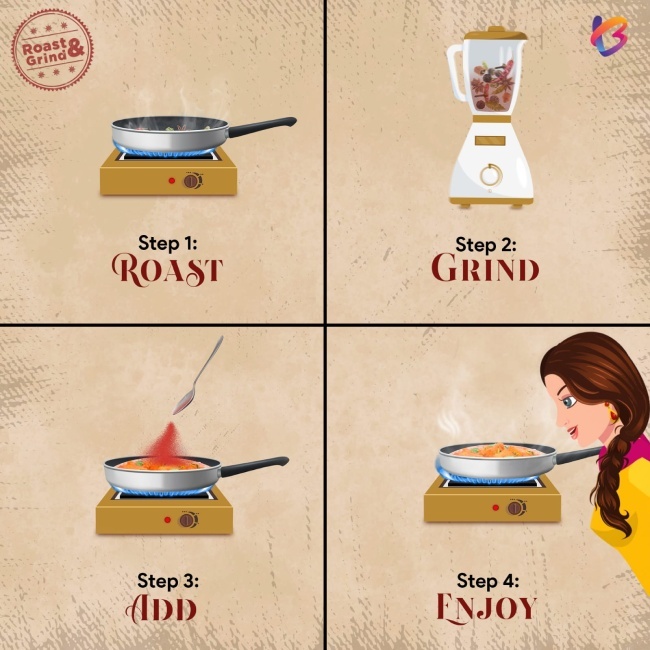Indian households are blessed with a plethora of masalas that are a perfect and instant elevator of taste. Whether it’s Rajma or Sambhar, Palak Paneer or Sarson da saag, our nose knows it all. That round stainless steel masala dabba in the kitchen with smaller containers inside full of colors and aroma is the heart of our kitchens. It holds the key to unlocking the ultimate taste of food. But the wide range of masalas goes into preparing such dishes, but it’s not all chili. This mixture of spices and herbs that form the base of Indian dishes and give them their characteristic flavors are cumin, cinnamon, cardamom, robust spices, peppery, and fragrant ones. Bearing their pride of place on the kitchen shelf, they create another kind of magic when blended.
But what goes behind preparing those masalas? What makes them a perfect fit for an instant hit dish? A couple of decades ago, if we rewind and revisit the old-school days, our grandmothers used to stay in the kitchen for long hours, preparing every bit of the ingredient that would go into the dish. Roasting the masalas and grinding them before putting them in the oil, the delicious aroma triggered our hunger.
As we grew up and the world advanced, the tradition of roasting and grinding masalas was left behind. Nuclear families and working parents got in the habit of purchasing every kind of masala displayed on the shelf of a grocery store. The readymade masalas in aesthetic packaging are easy to use, take no effort, and consume no time. Just a pinch of everything and ta-da! You smell deliciousness in the air.
It feels that something is missing, especially if you have tasted the incredible flavor of spices that have been roasted and ground fresh. Remember the soothing sound of mortar and pestle, silbatta, or stone grinder used to make chutneys or masalas. Probably we all were children coming back home to the delicious lunch our mothers or grandmothers had prepared.
The roasting accentuates the flavor of spices as it draws out the raw smell of untreated spices. Heating up with the cooking oil further enhances its flavors.
Also, roasting doesn’t need any oil; just put the spices in the skillet and roast over medium heat until it changes its shades and scatters the aroma.
But as time progresses, we have left the mortar and pestle on the most inaccessible shelves in our kitchen. Buying whole spices and grinding them as and when required takes effort, but it’s all worth it when you feel the difference it makes to the dish. The process also elongates the shelf life of such masalas as the whole state of spices retains its flavor and aroma for a much longer period than the packaged powdered versions of the same.
Also, when you pour whole spices in a mortar rather than sprinkling its ready-to-cook powder in the oil, the action causes each grain of spice to burst and generate a much stronger aroma.
Being one of the leaders in cultivating spices and acknowledging a huge mass of production across the country, it becomes important for us to preserve our traditions and rich cultural heritage. The packed powders we find in the grocery store are merely a product born out of convenience. A pink of these pre-mixes can surely add a great flavor to the dishes, but they aren’t distinctive and are a lot similar to one another. But this is India, the queen of spices, and we must get back to making our spice mixes.
We at Living Beyond believe in the authentic purity and essence of the spices. Since our customers grind the masalas by themselves, they are sure of the purity and health benefits compared to the ready-ground spices in the market.
When put together in an appropriate proportion for the daily Indian recipes, these spices make the cooking easier and more delicious. One would be fascinated by our quality spices bringing distinctive divine taste & flavors to make a dish extraordinary. While we shop mostly for the powders, the personalized blend of masalas maximizes the flavor you can explore from the dish.


